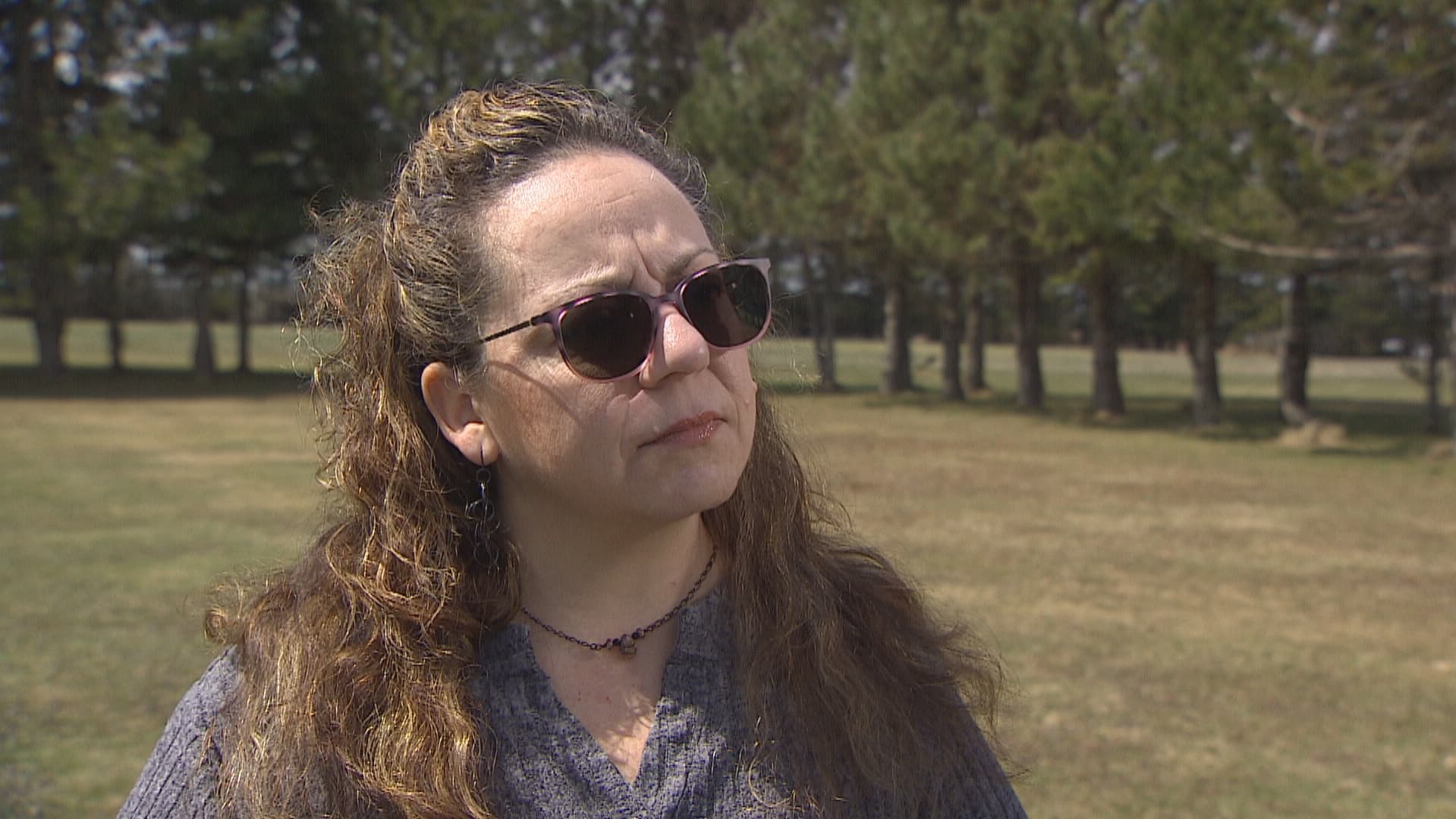Investment
My pandemic investment plunged 80 per cent. Here's what I learned – The Globe and Mail


At the beginning of the pandemic, I found myself considering venturing into riskier investments. I had recently started my first full-time job after university and, like many other young Canadians, amassed unexpected savings during the early months of lockdown when my spending plateaued.
At the time, I felt I could afford to invest a small portion of my portfolio into a riskier asset in exchange for the possibility of greater growth. I had a separate emergency fund and was otherwise well diversified. And I considered my long time horizon: with 50 years or more of investing to go, I had time to make up any losses.
It was around this time that a friend of mine started to become interested in the shares of Nasdaq-listed XpresSpa Group Inc. The company, which previously provided spa services in airports, was planning to convert its facilities to COVID-19 testing sites. At a time when fear surrounding the pandemic was at its highest, the business proposition seemed to make sense.
My friend, who was exceptionally enthusiastic about the company’s potential, had already bought shares. And, he had been right about stocks before. His excitement rubbed off on me and, on June 18, 2020, I bought around $2,000 worth of shares.
Thus began nearly two years of folly. The company was slow to set up testing sites. The stock faltered. Regulatory delays ensued. My shares dropped further. By fall 2021, panic surrounding testing was already starting to subside (though this would see a return when Omicron broke out in December), and some countries, including Canada, were starting to consider moving away from testing for travel.
With the urgency for airport testing on the decline, the price of my shares continued their steady decline until they settled where they now sit: 80 per cent down from where I bought them. Of the initial investment, only $400 remains.
While unfortunate, I was prepared to lose the total investment should the company not work out. And there are some things I – and other young investors – can learn from the experience.
The first lesson is, of course, to avoid speculation. The buy was, in fact, out of character for me. Now, as then, I hold a portfolio of relatively conservative assets, mostly in Canadian blue chip stocks such as banks, telecommunications and energy companies. My strategy had always been to buy and hold.
“Investing shouldn’t be exciting. It should be boring,” said Michael Dorfman, an investment adviser at BMO Private Wealth. “If it is exciting, it’s probably not investing – it’s gambling.”
Risk is inevitable while investing but it can be mitigated through diversification. Instead of putting $2,000 into one stock, I could have purchased a growth-oriented exchange-traded fund, or divided my funds among a number of riskier companies and alternative assets such as crypto.
I also took a gamble in that I trusted a well-meaning friend without doing my own research. Had I done so, I would have seen that XpresSpa’s profits had failed to rise significantly in years – a red flag, even given its coming planned operational change from spa to COVID-19 testing centre. “If you don’t know it, and you don’t understand it, you probably should stay away from it,” Mr. Dorfman said.
Yet I had been swept up in the excitement of the markets, which at this point were already rebounding from their crash in March, 2020. In the month that followed, stocks were buoyed by an influx of eager new retail investors eager to share their successes online.
“There are emotional human biases that come into play,” said Brianne Gardner, an investment adviser at Raymond James. “People only brag about their winners. You will never hear people talk about their losses.”
According to Ms. Gardner, one tool I could have taken advantage of to mitigate losses would have been a stop-loss. This is a type of order, selected when making the trade, that automatically sells the security in question if it falls below a pre-determined threshold.
Moreover, if the stock had been held within a non-registered (cash) account, I could have taken the loss and used that to offset any capital gains for the previous three years, or in the future indefinitely. However, I hold the shares in my tax-free savings account where, like any registered account, capital losses can’t be claimed for your investments.
According to Mr. Dorfman, no action is likely the best course of action: “Once it’s down 80 per cent, the possibility of further downside is probably low. So you can hang on to it and hope that maybe at some point, it recovers.”
Even if it doesn’t, I tell myself it was a teachable moment.
“Everybody has had a moment or two like that in their investment experience,” said Mr. Dorfman. “We all have a skeleton or two in our closets, right?”
Your time is valuable. Have the Top Business Headlines newsletter conveniently delivered to your inbox in the morning or evening. Sign up today.
Investment
So You Own Algonquin Stock: Is It Still a Good Investment? – The Motley Fool Canada


It’s been a wild ride for investors of Alongquin Power & Utilities (TSX:AQN) over the last few years. And honestly, not in a good way. Shares of Algonquin stock have shrunk lower and lower over the last five years, and remain down in 2024.
But there is one income stream of interest that keeps investors around, and that’s the company’s dividend. After slashing it to help strengthen its bottom line, Algonquin stock now offers a 6.93% dividend yield as of writing. But, is that enough?
What happened
First off, let’s discuss why Algonquin stock cut its dividend in the first place. The utility stock did this back in January 2023, for a few reasons that would help its overall financial health. Rising interest rates was one of them, since the company is holding a significant amount of debt with variable interest rates. And as rates rose, so too did their interest expenses.
The company also saw lower cash flow throughout 2022. This limited its ability to fund further projects, while maintaining the previous dividend level. Furthermore, Algonquin also went through unexpected costs and delays in completing its renewable energy projects. This all added to its financial pressure, causing the company to slash its dividend and plan US$1 billion in asset sales.
Did it work?
That’s the big question, and it’s still a bit too soon to tell whether Algonquin has improved enough for investors. The company’s debt load has come down however, and this led to the stock raising its dividend again in the latter half of 2023.
As for the strengthening of its balance sheet, the company still has more room to improve. For the full-year of 2023, debt rose by 13% from US$7.5 billion to US$8.5 billion in 2023. Revenue also dropped by 2% year over year, with cash from operations falling by 6% during the fourth quarter, though rising 1% year over year.
This goes to show that the company still has a lot more work to improve its balance sheet. And until that happens, it’s unlikely that there is going to be more growth for Algonquin stock in the near future.
Is the dividend worth it?
Algonquin continues to look like a volatile company to invest in at these levels. Even with shares down so far in 2024. The company has seen its shares drop 28% in the last year alone. Yet it still remains quite pricey, trading at 205.3 times earnings as of writing!
While there continues to be some improvements in terms of its earnings per share (EPS) growth quarter over quarter, overall the company is still swimming in debt. Frankly, it was probably too early for the company to increase its dividend after the cut, and it should have used that money to improve its balance sheet instead of trying to attract back investors for the yield.
For now then, I would consider Algonquin stock not the best investment, though it remains one to watch. After cutting costs and improving its bottom line, top-line growth will assuredly come. And when that happens, today’s share price could look pretty valuable.
Investment
Investors are growing increasingly weary of AI – TechCrunch


After years of easy money, the AI industry is facing a reckoning.
A new report from Stanford’s Institute for Human-Centered Artificial Intelligence (HAI), which studies AI trends, found that global investment in AI fell for the second year in a row in 2023.
Both private investment — that is, investments in startups from VCs — and corporate investment — mergers and acquisitions — in the AI industry were on the downswing in 2023 versus the year prior, according to the report, which cites data from market intelligence firm Quid.
AI-related mergers and acquisitions fell from $117.16 billion in 2022 to $80.61 billion in 2023, down 31.2%; private investment dipped from $103.4 billion to $95.99 billion. Factoring in minority stake deals and public offerings, total investment in AI dropped to $189.2 billion last year, a 20% decline compared to 2022.
Yet some AI ventures continue to attract substantial tranches, like Anthropic’s recent multibillion-dollar investment from Amazon and Microsoft’s $650 million acquisition of Inflection AI’s top talent (if not the company itself). And more AI companies are receiving investments than ever before, with 1,812 AI startups announcing funding in 2023, up 40.6% versus 2022, according to the Stanford HAI report.
So what’s going on?
Gartner analyst John-David Lovelock says that he sees AI investing “spreading out” as the largest players — Anthropic, OpenAI and so on — stake out their ground.
“The count of billion-dollar investments has slowed and is all but over,” Lovelock told TechCrunch. “Large AI models require massive investments. The market is now more influenced by the tech companies that’ll utilize existing AI products, services and offerings to build new offerings.”
Umesh Padval, managing director at Thomvest Ventures, attributes the shrinking overall investment in AI to slower-than-expected growth. The initial wave of enthusiasm has given way to the reality, he says: that AI is beset with challenges — some technical, some go-to-market — that’ll take years to address and fully overcome.
“The deceleration in AI investing reflects the recognition that we’re still navigating the early phases of the AI evolution and its practical implementation across industries,” Padval said. “While the long-term market potential remains immense, the initial exuberance has been tempered by the complexities and challenges of scaling AI technologies in real-world applications … This suggests a more mature and discerning investment landscape.”
Other factors could be afoot.
Greylock partner Seth Rosenberg contends that there’s simply less appetite to fund “a bunch of new players” in the AI space.
“We saw a lot of investment in foundation models during the early part of this cycle, which are very capital intensive,” he said. “Capital required for AI applications and agents is lower than other parts of the stack, which may be why funding on an absolute dollar basis is down.”
Aaron Fleishman, a partner at Tola Capital, says that investors might be coming to the realization that they’ve been too reliant on “projected exponential growth” to justify AI startups’ sky-high valuations. To give one example, AI company Stability AI, which was valued at over $1 billion in late 2022, reportedly brought in just $11 million in revenue in 2023 while spending $153 million on operating expenses.
“The performance trajectories of companies like Stability AI might hint at challenges looming ahead,” Fleishman said. “There’s been a more deliberate approach by investors in evaluating AI investments compared to a year ago. The rapid rise and fall of certain marquee name startups in AI over the past year has illustrated the need for investors to refine and sharpen their view and understanding of the AI value chain and defensibility within the stack.”
“Deliberate” seems to be the name of the game now, indeed.
According to a PitchBook report compiled for TechCrunch, VCs invested $25.87 billion globally in AI startups in Q1 2024, up from $21.69 billion in Q1 2023. But the Q1 2024 investments spanned across only 1,545 deals compared to 1,909 in Q1 2023. Mergers and acquisitions, meanwhile, slowed from 195 in Q1 2023 to 176 in Q1 2024.
Despite the general malaise within AI investor circles, generative AI — AI that creates new content, such as text, images, music and videos — remains a bright spot.
Funding for generative AI startups reached $25.2 billion in 2023, per the Stanford HAI report, nearly ninefold the investment in 2022 and about 30 times the amount from 2019. And generative AI accounted for over a quarter of all AI-related investments in 2023.
Samir Kumar, co-founder of Touring Capital, doesn’t think that the boom times will last, however. “We’ll soon be evaluating whether generative AI delivers the promised efficiency gains at scale and drives top-line growth through AI-integrated products and services,” Kumar said. “If these anticipated milestones aren’t met and we remain primarily in an experimental phase, revenues from ‘experimental run rates’ might not transition into sustainable annual recurring revenue.”
To Kumar’s point, several high-profile VCs, including Meritech Capital — whose bets include Facebook and Salesforce — TCV, General Atlantic and Blackstone, have steered clear of generative AI so far. And generative AI’s largest customers, corporations, seem increasingly skeptical of the tech’s promises, and whether it can deliver on them.
In a pair of recent surveys from Boston Consulting Group, about half of the respondents — all C-suite executives — said that they don’t expect generative AI to bring about substantial productivity gains and that they’re worried about the potential for mistakes and data compromises arising from generative AI-powered tools.
But whether skepticism and the financial downtrends that can stem from it are a bad thing depends on your point of view.
For Padval’s part, he sees the AI industry undergoing a “necessary” correction to “bubble-like investment fervor.” And, in his belief, there’s light at the end of the tunnel.
“We’re moving to a more sustainable and normalized pace in 2024,” he said. “We anticipate this stable investment rhythm to persist throughout the remainder of this year … While there may be periodic adjustments in investment pace, the overall trajectory for AI investment remains robust and poised for sustained growth.”
We shall see.
Investment
Latest investment in private health care in P.E.I. raising concerns – CBC.ca


The P.E.I. government’s decision to invest $25 million into for-profit long-term care facilities is raising concerns about the further privatization of the health-care system.
Currently, there is a mix of private and public long-term care facilities on P.E.I. The province said it needed to add 54 new long-term care beds as soon as possible, and the private sector could get the job done faster.
Pat Armstrong, a member of the Canadian Health Coalition who has written cautionary books on the privatization of health care, said the province should have invested in the public beds rather than turning to the private sector.
“Their objective is to make a profit and the money going to profit is not going to care,” Armstrong said.
Three years ago, an internal government report on long-term care found private homes paid workers less and provided fewer care options than public manors.
Michelle Neill, leader of the P.E.I. New Democratic Party, says the recent funding for long-term care beds is good, but could be better. She’s pushing for more financial transparency from both private providers of long-term care in P.E.I. and from the government itself.
The same report said P.E.I. needed hundreds more long-term care beds.
Other examples of the privatization of health care include:
- The Maple app, owned in part by Loblaws and Shoppers Drug Mart.
- Private agency nurses.
- There’s a proposal in the works for a private clinic to address chronic delays with cataract surgery in P.E.I.
NDP Leader Michelle Neill is also raising concerns about the increasing reliance on private, for-profit health care in P.E.I.
“We want to make sure that any kind of expansion goes through the public health-care system and the public long-term care system,” she said. “That way there’s full accountability for all of those funds.”


In a statement, Health P.E.I. said it’s doing what it can to deal with staff shortages, and that “it is crucial to maintain publicly funded services that are high quality, accessible, and provide value for money.”
But the statement didn’t say if it matters whether that public funding goes to a public or private facility.
Armstrong said it does matter.
“If [private care homes] are no longer making a profit, then it makes sense for them to close down, especially if … they are on valuable property that would be attractive to other investors.”
Armstrong will be speaking at a lecture April 23 at Colonel Gray High School in Charlottetown titled Profiting from Care; What’s the Problem. It is hosted by the P.E.I. Health Coalition.
-
Media21 hours ago
DJT Stock Plunges After Trump Media Files to Issue Shares
-
Business20 hours ago
FFAW, ASP Pleased With Resumption of Crab Fishery – VOCM
-
Media20 hours ago
Marjorie Taylor Greene won’t say what happened to her Trump Media stock
-
Business21 hours ago
Javier Blas 10 Things Oil Traders Need to Know About Iran's Attack on Israel – OilPrice.com
-
Art22 hours ago
It’s Time to Remove Father Rupnik’s Art – National Catholic Register
-



 Politics21 hours ago
Politics21 hours agoIn cutting out politics, A24 movie 'Civil War' fails viewers – Los Angeles Times
-
Media19 hours ago
Trump Media stock slides again to bring it nearly 60% below its peak as euphoria fades – National Post
-
Business19 hours ago
Tesla May Be Headed For Massive Layoffs As Woes Mount: Reports – InsideEVs





